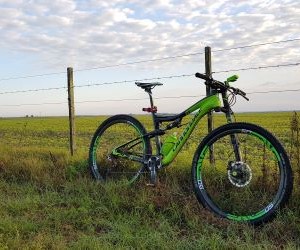Master endurance cycling in tropical climates with effective strategies. Learn hydration, heat adaptation, and training tips for peak performance.
HOW DO I USE CADENCE TO IMPROVE PERFORMANCE?
Cadence—the number of pedal revolutions per minute (RPM)—is a key metric in cycling performance, often overlooked by recreational riders. But when used strategically, cadence becomes a powerful tool to boost endurance, power output, and energy efficiency. Whether you're a beginner or a competitive cyclist, understanding how to adjust and train your cadence can unlock major gains. This article breaks down what cadence is, how it affects performance, and step-by-step methods to optimize it based on your cycling goals.

What cadence actually means
RPM explained—and why it matters
Cadence is the measure of how fast you're pedaling, typically displayed in revolutions per minute (RPM). It’s one of the three pillars of cycling output—alongside power and heart rate. Unlike power, which measures how hard you’re working, cadence measures how quickly you’re turning the pedals.
A low cadence (60–75 RPM) usually feels like you're pushing hard gears slowly—engaging more muscular strength. A high cadence (85–100+ RPM) involves spinning faster with less force per pedal stroke, engaging cardiovascular endurance. Elite riders often train to hold a high, efficient cadence that conserves muscular energy and delays fatigue.
Cadence isn't about finding one perfect number—it’s about adapting to terrain, effort, and your own physiology. The right cadence for climbing won’t be the same as for sprinting or endurance riding. By learning to control your cadence, you take charge of how and when your body expends energy.
Cadence = pedal revolutions per minute (RPM)
Low cadence = more muscle load, ideal for short power efforts
High cadence = more aerobic load, better for long endurance
Elite cadence: 90–100+ RPM on flats, 70–80 RPM on climbs
Adjusting cadence can reduce fatigue and improve pacing
Understanding cadence is step one—next comes learning how to manipulate it in real time to train smarter and race stronger.
How cadence impacts performance
Balance energy output and fatigue
Cadence is more than a number—it directly affects your physiological efficiency and fatigue rate. The key lies in how cadence balances muscular vs. cardiovascular load. At a lower cadence, your muscles do more work per stroke, leading to higher lactate buildup. At a higher cadence, your heart and lungs carry more of the effort, which—if trained correctly—can improve endurance and consistency over time.
Studies show that trained cyclists perform better at higher cadences (90–100 RPM) because they’ve conditioned their aerobic systems to handle prolonged spinning without burning out their legs. However, that doesn’t mean high cadence is always better. Terrain, bike setup, and rider physiology all influence what cadence is optimal in a given scenario.
Cadence also impacts recovery. Riding at a slightly higher cadence during recovery rides or after a hard interval helps flush out lactic acid and prevent stiffness. On climbs, a moderate cadence allows steady power delivery without burning all your matches early.
High cadence = lower muscular fatigue, higher cardio load
Low cadence = higher torque, quicker muscle fatigue
Climbing cadence sweet spot: 70–85 RPM depending on gradient
Recovery cadence: 90–95 RPM with low resistance
Time trial/sustained efforts: aim for 85–95 RPM
The best cyclists aren’t locked into one cadence—they adapt in real time. By training your body across different cadences, you become more efficient under every condition: climbs, flats, sprints, or long-distance rides.
Training to improve your cadence
Step-by-step methods to level up
Improving cadence isn’t about spinning faster at all times—it’s about gaining control and expanding your cadence range. The goal is to develop neuromuscular coordination at different RPM levels, so you can respond fluidly to terrain or racing demands without compromising performance.
Start with cadence drills. During a steady ride, alternate between 10-minute intervals at 90–100 RPM and your natural cadence. Focus on smooth pedaling and minimal upper-body movement. Over time, include high-cadence intervals (110–120 RPM) in short bursts to improve neuromuscular adaptation.
For climbers, work on mid-cadence hill repeats—grinding at 70–80 RPM over 3–5 minute climbs. Combine this with low-cadence strength intervals (60–65 RPM) in big gears on flats to build torque. These sessions boost your ability to hold power at slower cadences while training muscular endurance.
Use a cadence sensor or smart trainer to track improvements. Apps like Zwift, TrainerRoad, and Wahoo SYSTM offer cadence-focused workouts. Pair your training with video analysis or coach feedback to ensure your form stays efficient.
Cadence ladders: Start at 80 RPM and increase by 5 RPM every 2 minutes
High-RPM intervals: 3x30 seconds at 110+ RPM with full recovery
Low-cadence power: 4x4 minutes at 60 RPM in big gear
Hill cadence drills: 5-minute climbs at 75–80 RPM
Spin-outs: Recovery rides with steady 95–100 RPM to flush legs
Training cadence requires patience and consistency, but the rewards are huge. You’ll ride smoother, fatigue less, and adapt faster to different road profiles. Cadence control turns you from a gear masher into a precision machine.
YOU MAY ALSO BE INTERESTED






